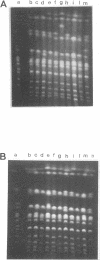Abstract
The occurrence of killer yeasts in an area of Tuscany (central Italy) was studied. Killer yeasts were found in 88% of spontaneous wine fermentations from 18 wineries. The incidence of killers varied with respect to fermentation stage and vintage period, increasing from the first vintage to successive ones and from the commencement to the end of fermentation. At the end of fermentation, the proportion of killer strains relative to total yeast population was below 25% in 15 cases, above 75% in 6 cases, from 25 to 50% in 5 cases, and from 50 to 75% in 3 cases. Karyotype analysis also showed a mixed killer population in the fermentations in which the killers dominated.
Full text
PDF
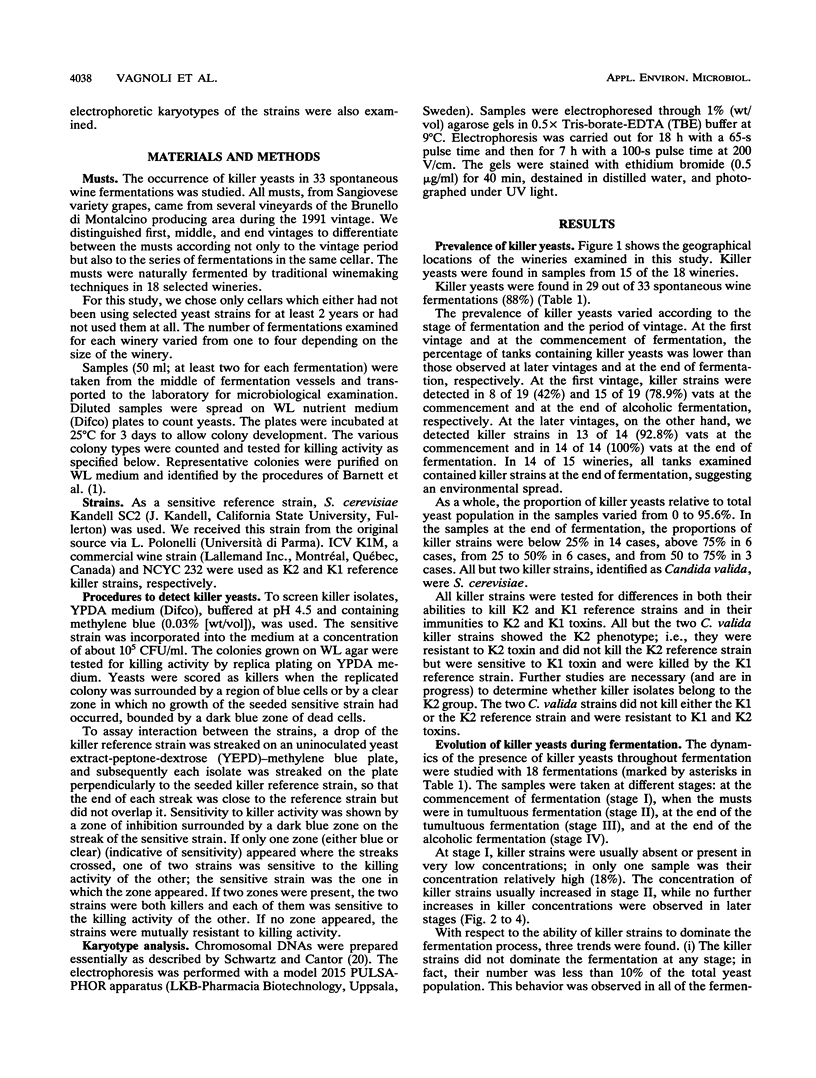
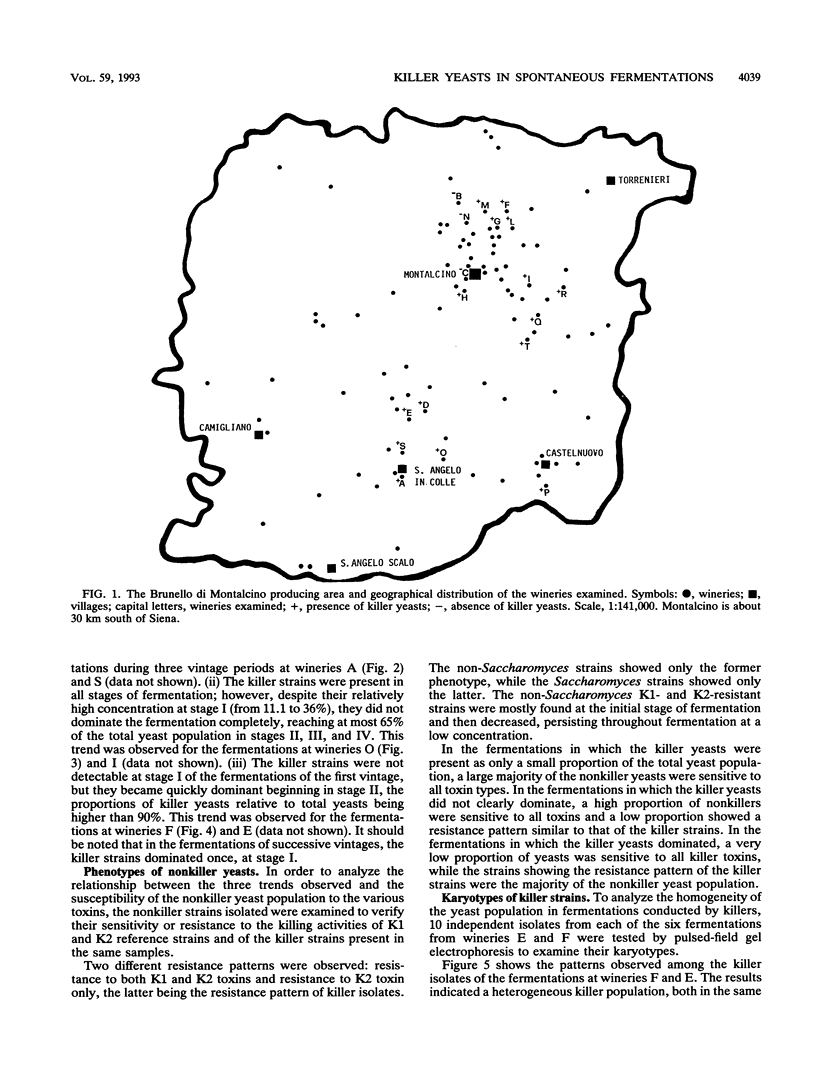
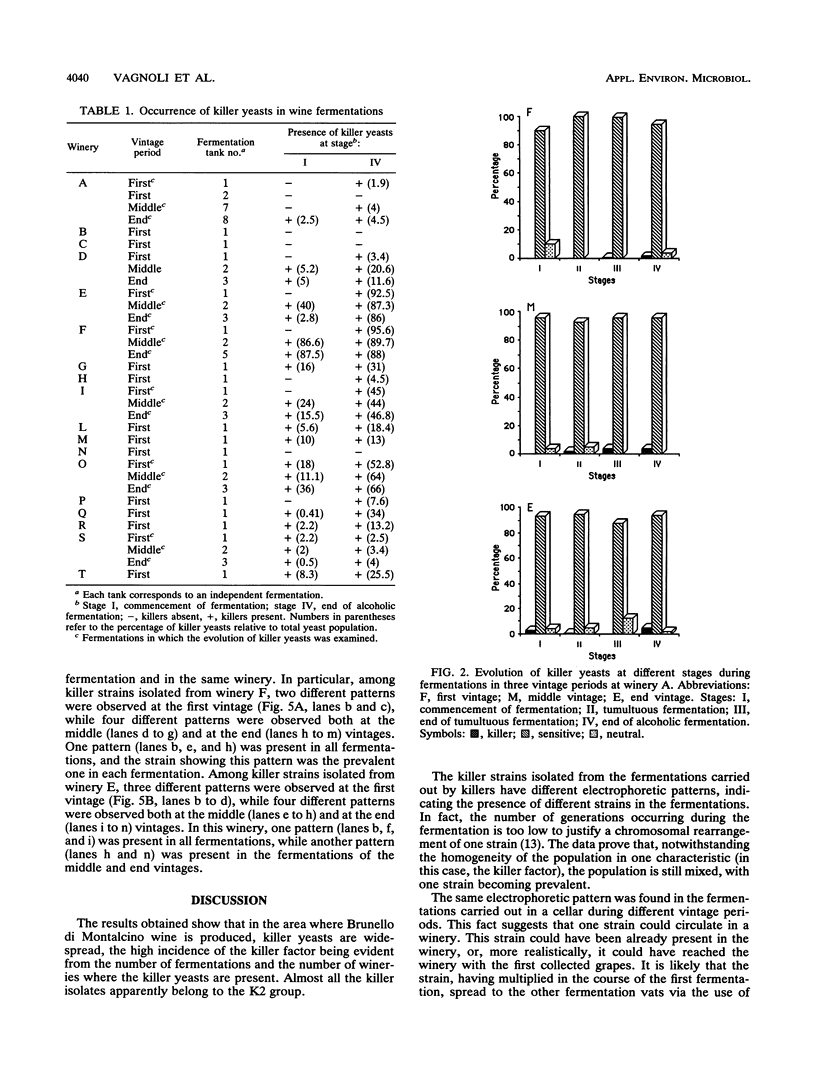

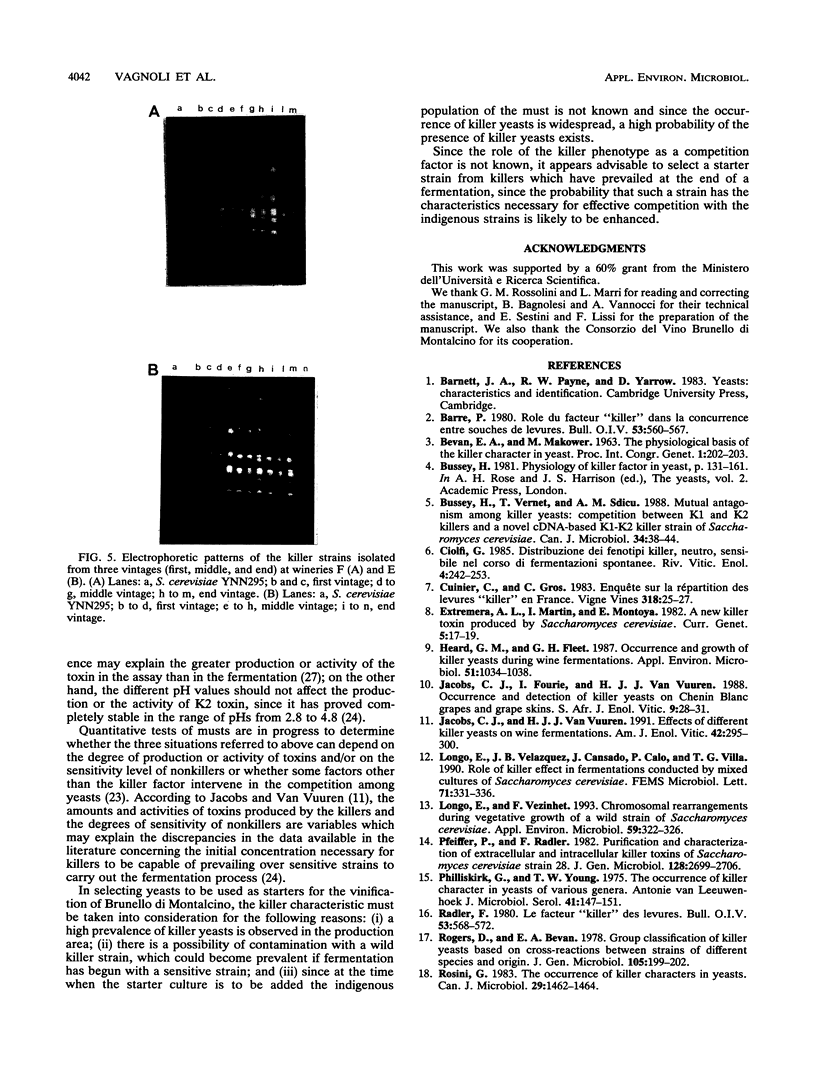
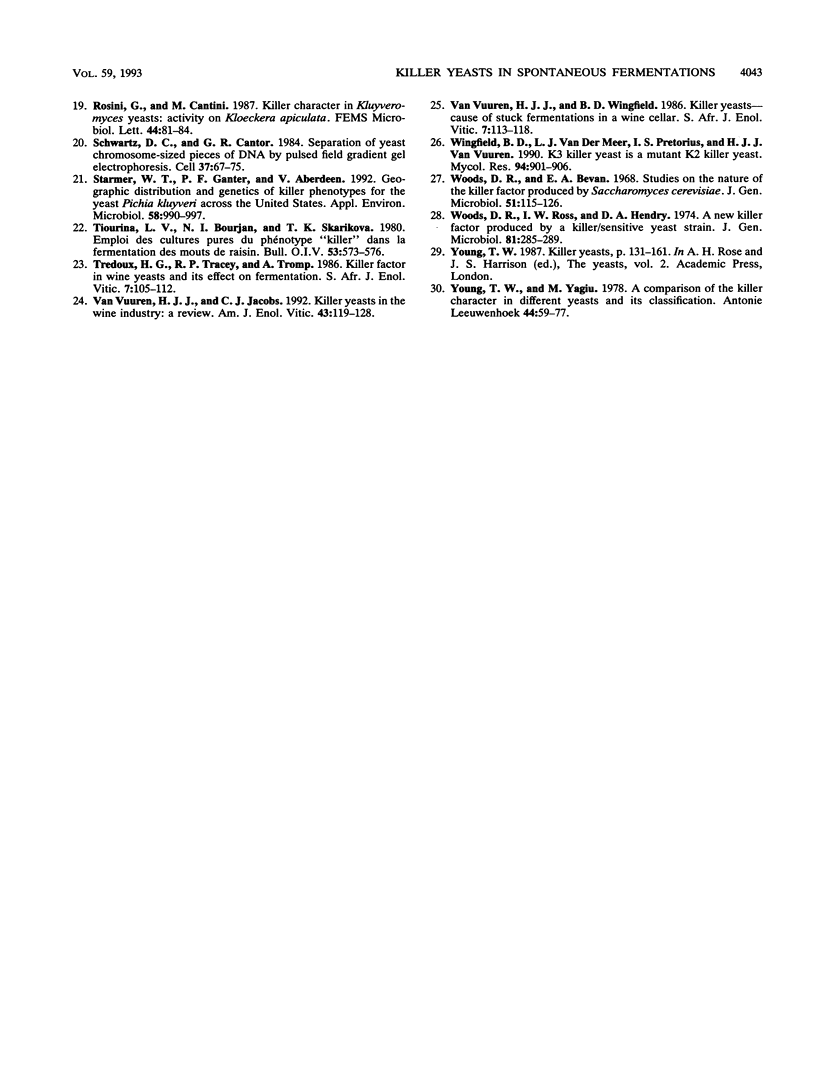
Images in this article
Selected References
These references are in PubMed. This may not be the complete list of references from this article.
- Bussey H., Vernet T., Sdicu A. M. Mutual antagonism among killer yeasts: competition between K1 and K2 killers and a novel cDNA-based K1-K2 killer strain of Saccharomyces cerevisiae. Can J Microbiol. 1988 Jan;34(1):38–44. doi: 10.1139/m88-007. [DOI] [PubMed] [Google Scholar]
- Longo E., Vezinhet F. Chromosomal rearrangements during vegetative growth of a wild strain of Saccharomyces cerevisiae. Appl Environ Microbiol. 1993 Jan;59(1):322–326. doi: 10.1128/aem.59.1.322-326.1993. [DOI] [PMC free article] [PubMed] [Google Scholar]
- Philliskirk G., Young T. W. The occurrence of killer character in yeasts of various genera. Antonie Van Leeuwenhoek. 1975;41(2):147–151. doi: 10.1007/BF02565046. [DOI] [PubMed] [Google Scholar]
- Rosini G. The occurrence of killer characters in yeasts. Can J Microbiol. 1983 Oct;29(10):1462–1464. doi: 10.1139/m83-224. [DOI] [PubMed] [Google Scholar]
- Schwartz D. C., Cantor C. R. Separation of yeast chromosome-sized DNAs by pulsed field gradient gel electrophoresis. Cell. 1984 May;37(1):67–75. doi: 10.1016/0092-8674(84)90301-5. [DOI] [PubMed] [Google Scholar]
- Starmer W. T., Ganter P. F., Aberdeen V. Geographic distribution and genetics of killer phenotypes for the yeast Pichia kluyveri across the United States. Appl Environ Microbiol. 1992 Mar;58(3):990–997. doi: 10.1128/aem.58.3.990-997.1992. [DOI] [PMC free article] [PubMed] [Google Scholar]
- Woods D. R., Bevan E. A. Studies on the nature of the killer factor produced by Saccharomyces cerevisiae. J Gen Microbiol. 1968 Apr;51(1):115–126. doi: 10.1099/00221287-51-1-115. [DOI] [PubMed] [Google Scholar]
- Woods D. R., Ross I. W., Hendry D. A. A new killer factor produced by a killer-sensitive yeast strain. J Gen Microbiol. 1974 Apr;81(2):285–289. doi: 10.1099/00221287-81-2-285. [DOI] [PubMed] [Google Scholar]
- Young T. W., Yagiu M. A comparison of the killer character in different yeasts and its classification. Antonie Van Leeuwenhoek. 1978;44(1):59–77. doi: 10.1007/BF00400077. [DOI] [PubMed] [Google Scholar]



